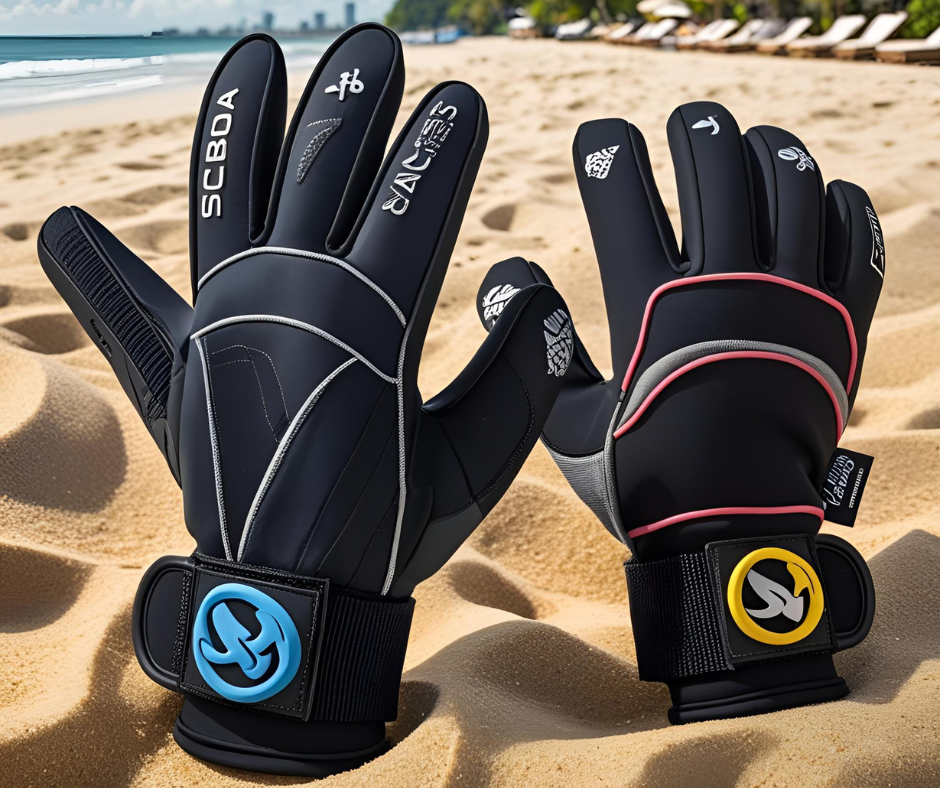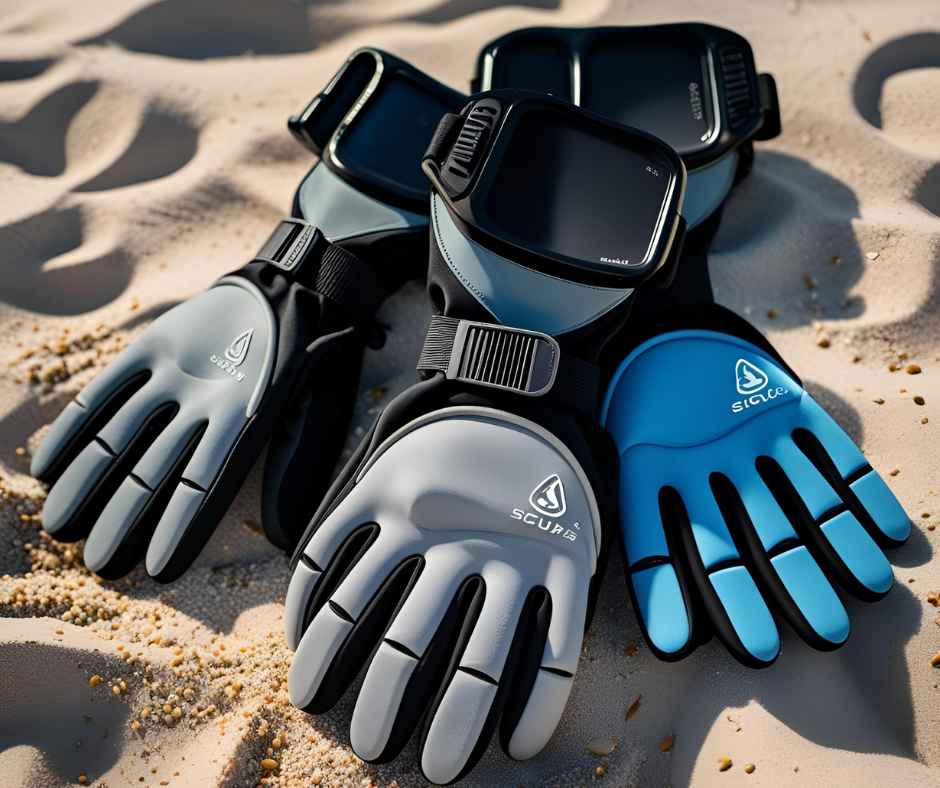Diving equipment plays an indispensable role in every scuba diver’s journey—from recreational explorations to technical deep dives. Among the array of items packed into a diver’s gear bag, scuba gloves are often undervalued despite their significant contribution to both safety and comfort. These gloves serve more than a singular purpose; they are multifunctional tools designed to provide insulation, shield your hands from underwater hazards, and support dexterity during technical tasks. Without the proper gloves, even a skilled diver may find themselves at a disadvantage in varying underwater environments.
The importance of choosing the right scuba gloves becomes especially pronounced when navigating the vast spectrum of dive sites around the world. From the chilly waters of the Pacific Northwest to the sun-drenched reefs of Southeast Asia, every diving location demands specific considerations regarding protection and temperature regulation. In this guide, we’ll take a comprehensive look at how to choose the right scuba gloves tailored for both warm and cold water dives—integrating insights into glove types, material composition, thermal resistance, dexterity considerations, and how they align with your overall diving equipment.
How Scuba Gloves Complement the Function of Your Diving Equipment
Scuba gloves are not an isolated accessory; they function as a crucial component of your complete diving equipment system. When correctly chosen, gloves enhance the coherence between various parts of your gear—from your exposure suit to your buoyancy control device (BCD). The hands are among the most exposed and sensitive parts of the human body, especially in colder temperatures where heat loss occurs rapidly. This makes protecting them a top priority for any diver looking to maintain comfort and operational capacity underwater.
Moreover, gloves protect divers against abrasive surfaces like jagged coral, rusted shipwrecks, barnacles, and even accidental brushes with marine life like sea urchins or jellyfish. In warm water, protection takes precedence over insulation. However, in colder environments, gloves become essential thermal barriers. Neglecting them can lead to decreased mobility or even cold-related conditions such as numbness and loss of grip strength, which in turn impacts your ability to manage essential diving equipment like inflator hoses, mask straps, and camera controls.
Tailoring Your Gloves to Temperature: A Practical Approach
Selecting the right scuba gloves hinges heavily on water temperature, which directly influences your need for thermal insulation. Diving equipment should be purpose-built for its operating environment, and gloves are no exception. Understanding the thermal demands of different water conditions helps ensure not just a comfortable dive—but a safe one.
Warm Water Diving (Above 24°C / 75°F)
In tropical climates, thick gloves are not necessary. The primary concern in warm water is abrasion and UV protection, rather than insulation. Gloves in the 1mm to 2mm neoprene range work best here, offering flexibility and grip without causing your hands to overheat. Many of these gloves feature open-cell or mesh-backed designs to encourage water circulation and prevent overheating. They’re perfect for reef dives, wreck tours, or shallow snorkeling expeditions where your hands are in frequent contact with the environment. Despite the light build, these gloves are still a critical part of your diving equipment, offering a layer of protection against sharp coral, abrasive rock surfaces, and stinging marine organisms.
Cold Water Diving (Below 20°C / 68°F)
Cold water demands more than surface protection. Here, insulation becomes the primary concern. Gloves should ideally range from 5mm to 7mm in thickness, depending on the expected temperature and duration of the dive. Divers venturing into icy or sub-arctic waters often use dry gloves in combination with drysuits for maximum insulation. Unlike wetsuit gloves that trap a thin layer of water, dry gloves completely seal out water, maintaining warmth more effectively over extended periods. For these dives, every piece of diving equipment—from your regulators to your gloves—must be thermally efficient and resistant to the cold’s physical and cognitive effects.
Different Types of Gloves and Their Purpose in Diving Equipment Systems
Scuba gloves come in a variety of styles, each engineered to meet specific challenges under the water. Understanding the distinctions between them is essential for making an informed decision that suits your diving conditions and integrates seamlessly with the rest of your diving equipment.
1. Standard Neoprene Gloves
By far the most commonly used glove type, neoprene gloves are versatile and offer a great balance between flexibility and warmth. Available in different thicknesses, these gloves are suitable for both warm and moderately cold waters. The high-stretch neoprene material allows for a snug fit that molds to your hand’s shape, providing improved dexterity for handling valves, buckles, and other diving equipment. Some models feature textured palms or reinforced fingers to enhance grip and durability—important features for both recreational and technical divers.
2. Dry Gloves
Dry gloves are a staple in cold-water or technical diving where prolonged exposure requires extreme thermal protection. These gloves form an airtight seal with drysuits, completely isolating your hands from the water. Unlike wetsuit gloves that rely on a layer of warmed water between the glove and skin, dry gloves maintain body heat by keeping your hands completely dry. They often include inner liners made of fleece or other thermal fabrics to provide additional insulation. Divers who use dry gloves typically have more complex diving equipment setups and require advanced training to use them effectively without impeding mobility.
3. Kevlar-Reinforced Gloves
Kevlar gloves are the go-to option for divers who prioritize durability above all else. Ideal for wreck, cave, or commercial diving, these gloves provide resistance to cuts, punctures, and heavy abrasion. Kevlar overlays are typically applied to high-contact areas like the palms, knuckles, and fingertips. While slightly less flexible than standard neoprene, these gloves are essential for dive environments where sharp objects or heavy handling of equipment are common. Integrating Kevlar gloves into your diving equipment kit ensures peace of mind in high-risk underwater environments.
Glove Materials: Beyond Just Neoprene
The performance of a scuba glove is largely dependent on the materials used. Neoprene is the industry standard due to its excellent insulating properties and elasticity, but there are several variations and enhancements that improve glove functionality within a broader diving equipment framework.
- Closed-Cell vs. Open-Cell Neoprene: Closed-cell neoprene is more durable and water-resistant, while open-cell neoprene offers better flexibility and insulation but can be more fragile.
- Lined Interiors: Many gloves feature linings like titanium-coated fabrics, fleece, or nylon, which add an extra layer of thermal resistance and comfort.
- Grip Enhancements: Silicone or rubber texturing on the palms and fingers boosts grip, making it easier to handle delicate or heavy-duty diving equipment such as dive cameras, scooters, or lift bags.
Material choice impacts not just comfort and warmth, but also how your gloves interact with the rest of your gear during the dive.
Thickness vs. Dexterity: Finding the Sweet Spot
Choosing the right glove thickness is always a trade-off between warmth and dexterity. Thicker gloves offer more thermal protection but limit finger mobility, which can interfere with tasks like pressing buttons on a dive computer, clipping off a reel, or tightening buckles.
- 1–2mm: Great for warm water, these gloves allow for near-full finger movement and tactile sensitivity.
- 3–5mm: Suitable for temperate waters; they offer a balance of insulation and usability.
- 6–7mm or Dry Gloves: Best for cold to extremely cold waters. While they offer superior warmth, these gloves can significantly reduce finger flexibility.
When evaluating gloves, simulate common diving motions such as reaching for your BCD inflator, adjusting your mask, or securing hoses. The right gloves will allow you to perform all these tasks seamlessly while integrated into your diving equipment setup.
Fit and Closure Systems: More Than a Comfort Issue
A poorly fitting glove compromises both insulation and mobility. Gloves should be snug around the fingers and wrist to reduce water flushing, but not so tight that they hinder circulation. Look for features such as anatomical shaping, stretch panels, and pre-curved fingers for an ergonomic fit.
Closure systems also play a pivotal role. Common options include:
- Velcro Straps: Adjustable and simple but may wear out over time.
- Elastic Cuffs: Provide a secure fit while being easy to put on or remove.
- Zipper Closures: Offer strong seals, often found in thicker gloves for cold water.
An effective seal between your gloves and wetsuit or drysuit sleeve ensures your entire diving equipment system works cohesively, preventing heat loss and maintaining comfort during long or deep dives.
Durability and Care: Extending Glove Lifespan
Gloves are among the most frequently used and abused pieces of diving equipment. From gripping jagged rocks to manipulating tanks and gear underwater, they undergo constant stress. To maximize their lifespan, follow these care tips:
- Post-Dive Rinse: Rinse gloves thoroughly in freshwater after every dive to remove salt, sand, and debris.
- Drying: Air dry in a shaded, well-ventilated area. Avoid sun exposure which can degrade neoprene over time.
- Storage: Store gloves flat or hanging—never folded—to maintain shape and prevent material fatigue.
Periodic inspection of seams, wrist closures, and grip surfaces will alert you to wear-and-tear before it compromises the glove’s effectiveness or your diving safety.
Travel Considerations and Sustainable Transport
Modern divers are increasingly conscious about travel logistics and environmental impact. Gloves are lightweight and easy to pack, but transporting the rest of your diving equipment can be more challenging, especially in urban coastal areas or island destinations.
As technology evolves, alternative transport options are emerging. For example, some dive centers are starting to explore eco-conscious delivery solutions. In densely populated areas where short-distance logistics are common, ebike Singapore services has shown some potential in facilitating gear transport to and from dive sites or retail outlets. This integration of sustainable transport with the logistics of diving equipment reflects a shift toward greener diving practices.
Conclusion: Complete Your Kit with the Right Scuba Gloves
Choosing the perfect scuba gloves is not a standalone decision—it is part of building a cohesive and efficient diving equipment system. The right gloves enhance your dive experience by offering warmth, protection, and dexterity suited to the conditions you dive in. Whether navigating a vibrant reef in warm waters or plunging into the icy depths of a mountain lake, your gloves should empower you to stay safe and explore confidently.
Don’t let cold fingers or an ill-fitting pair of gloves hinder your underwater adventures. With the proper understanding and selection process, you can find gloves that seamlessly integrate with your diving equipment—ensuring you’re ready for any environment the ocean offers.


